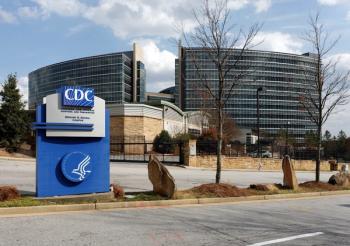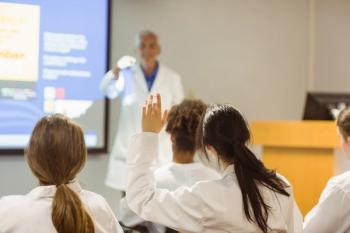
- Medical Economics March 2021
- Volume 98
- Issue 3
The role of technology in lipid management
Telehealth has advanced by leaps and bounds in the last year, as medical practices adjust to the COVID-19 pandemic. Virtual visits, remote patient monitoring (RPM), continuous glucose monitoring (CGM) and other tools are helping physicians meet their patients where they are needed.
Telehealth has advanced by leaps and bounds in the last year, as medical practices adjust to the COVID-19 pandemic. Virtual visits, remote patient monitoring (RPM), continuous glucose monitoring (CGM) and other tools are helping physicians meet their patients where they are needed.
So, what role does telehealth play in heart health, particularly lipid management? Medical Economics®, with the assistance of our partner brand at Practical Cardiology®, put together a panel of lipid management experts, to talk about the role of technology in helping patients manage their heart health. The transcript was edited for length and clarity.
The panel:
Guy Mintz, M.D.
Board-certified lipidologist and director of cardiovascular health and lipidology at Sandra Atlas Bass Heart Hospital at North Shore University Hospital, Northwell Health
Brett Nowlan, M.D.
Board-certified lipidologist and non-invasive cardiologist at a private practice in Connecticut
Lucia Novak, CRNP
Board-certified nurse practitioner, co-executive director of Capital Health and Metabolic Center at Capital Diabetes and Endocrine Associates, and associate editor of the ADA’s Clinical Diabetes journal
Medical Economics® (ME): In terms of remote monitoring and telehealth, what role did it have in managing your patients with diabetes and other heart conditions? How did you use it?
Novak: It saved our practice. And it really enabled us to continue to provide the quality care our patients needed when we couldn’t have them in front of us. So, in an endocrine practice, what we are typically monitoring is glucose. And a lot of our patients now are using continuous glucose monitoring and delivering insulin via pump. And usually, the two of those are communicating. And all of this technology is available via Bluetooth into the cloud and then into the cloud into our server. And then we can access the data without the patient actually needing to be there. And having that kind of information at your fingertips allows you to make the necessary adjustments in treatment, to have those important discussions about lifestyle and everything else, especially because in the COVID-19 world, the patients who were the most hard hit with the poor outcomes were those that had pre-existing type 2 diabetes and other cardiovascular issues. And so, having the ability to manage our patients, when we could not see them directly really made a big difference. And I think it actually accentuated the importance of making sure your patients are connected in some way — that if they’re using blood pressure monitors or apps on their phones that are keeping track of sleep and activity, that we have an ability to capture that data so that we as clinicians can use that information in a positive way.
Mintz: The most important thing is staying connected with your patients. In terms of the cardiovascular arena, lifestyle modification can very easily be achieved through telemedicine. Certainly, you get to see what the patient’s eating in their house. You know, I have patients who walk around with a smartphone and show me their refrigerator, their pantry, and other things. So, you get to see what they’re doing. You get to see how they’re living, and you get to really counsel them. Certainly, in the lipid lowering world, we can achieve all this counseling through telehealth.
ME: How do you see the in-person visits and the telehealth visits complementing each other?
Nowlan: There’s no question this has been extremely helpful. If you had to pick a silver lining out the pandemic is that we had to turn on a dime and adopt this. And I know in our office, within 24 hours we were saying, ‘We need telehealth, we have to pick a service.’ And we were doing it the next day. And so, it allowed us to really turn quickly. And what’s interesting is how good it is for some things.
You mentioned lipid management, and able to see lab results, the patient sees lab results, were reviewing side-effects. You don’t need hands on — although that is nice — but you don’t need it to achieve 95% of what you’re trying to achieve there. What I’ve found is that the in-office visits and the data we’re getting is starting to homogenize with what’s happening as an outpatient. Say your blood pressure is high today. Well, I’m not going to pull the trigger and make a decision that you’re hypertensive today. Instead, we’re going to monitor your blood pressure. And you’ll get back to me and you’ll document. Why don’t we do another telehealth appointment in two weeks and you give me the numbers? And so, the two approaches are complimentary.
Mintz: It also allows a role within the practice for your allied health professionals and nurse practitioners to assist in the telehealth, telehealth world.
ME: What advice do you have for physicians trying to get started using remote patient monitoring telehealth to manage heart conditions at their practices?
Mintz: First, if you’re just starting up, you want to pick a platform that’s secure. You want to pick a platform that’s easy. You have to educate the patient how to use it. And certainly, the staff needs to be educated on how to use it.
It was many a time where my staff had set me up to do a telehealth visit, and the patients had their computer on mute. And I could see them, and they couldn’t hear me, and telehealth video conference became, let’s just talk on the phone. So, all that needs to be figured out.
The other things that we matured on as time went on — and we asked our patients about this — we realized many patients don’t have an ambulatory blood pressure cuff. And so, we recommended that they get one. I also recommend they get a pulse oximeter, so they can measure their O2 saturation and their pulse.
The other thing we recommended for certain patients that have arrhythmias or a lot of palpitations during this COVID pandemic was the cardia device, which can transmit an EKG to their smartphone and then it gets emailed to us. We also utilized home blood drawing, so patients never had to leave the house, they were comfortable with someone coming to the home. So, making a laundry list of what we needed to get patients to have at home to make our job even better.
Nowlan: I think there’s all these goals that one can achieve if you’re using remote patient monitoring. And you know, we all think about improved health outcomes. And of course, it’s very important. We want patients to have a better experience when they access us. And we want to either reduce costs or we want to improve revenue. The one aspect I think often gets ignored is we as providers should have increased satisfaction. I think it’s very important, we have to look after ourselves in our practice, so that we are providing good care for patients. And having all of those things, including our ease of treating patients, in mind is a good thing to always have front and center when you’re deciding which avenue you’re going to go down to adopt this technology.
It’s also about starting with the end in mind. For example, in a hypothetical office, hypertension treatment is not great, we’re not getting data, we’re not sure if patients are measuring on their own. So, the end in mind is excellent blood pressure control, that’s measurable, something that we can hold patients accountable to, and that’s easy for me as a provider to employ. And I think if you have those things clearly in your mind when picking things like vendors and products rather than sort of the next shiny toy that comes to the door, that can be very, very helpful.
Novak: In my practice, it was about hand holding. We really tried to take the time to contact them and walk them through the steps of what they needed to do with the devices, especially our older. Just knowing where the camera was on their phone, trying to get other family involved to assist. It really does take a village.
And I think once they figured it out, they were very engaged. At first, we had a lot of patients that were like, ‘Oh, no, I’ll wait until the office is open.’ Everyone thought we were going to be closed until Easter and then we were going to beat them again. And that didn’t happen. And so, once they realized that this was it, and they were starting to get more anxious, they really wanted that connection with their health care provider, and then learned how to do it.
I will reiterate what Dr Nowlan said: it’s really important that when you are looking at using remote patient monitoring that you to make sure you carefully choose a platform that may be able to offload the burden of all of that data coming in and the requirements of how that data has to be monitored for you. That’s so you are able to get reimbursement. There are some really good platforms that have that ability to do a lot of that for you. It does not do the clinician’s work, it does not take away from what you offer your patient, but it takes away the nuts and bolts so that you can practice more effectively, and still render a profit for that extra service.
I really recommend that you look into the AMA’s playbook on RPM; they go through step-by-step recommendations on what you can do for your practice, small or large. You can apply it and figure out how it can best work for you.
ME: What does the future for remote patient monitoring look like for lipid management?
Nowlan: I think the future absolutely lives within cloud-based data analysis, with artificial intelligence, neural network style analysis, something that’s done in a very sophisticated fashion, independent of the condition, that delivers that information to the clinician in a useful fashion.
Novak: We definitely will see artificial intelligence and how it’s helping patients. Along those lines, computer assisted decision making for clinicians to help put all those pieces together. How do you identify risk? How do you identify therapies to best reduce that risk? All of those calculators will be put into some kind of an algorithm, maybe integrated in EHRs. And it would be great if we could have an EHR that really was universal and communicated.
Articles in this issue
over 4 years ago
Prepare your practice for a private equity transactionover 4 years ago
Put lenders to the testover 4 years ago
The cyberwar against health care practicesover 4 years ago
7 tips for clear patient communicationover 4 years ago
Addressing patient health literacyover 4 years ago
Improve senior patient communication with technologyover 4 years ago
How physicians can assist patients on proper heart healthover 4 years ago
Identity theft risk is spikingNewsletter
Stay informed and empowered with Medical Economics enewsletter, delivering expert insights, financial strategies, practice management tips and technology trends — tailored for today’s physicians.















